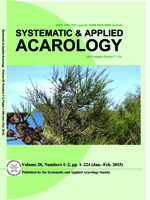
A new species of Pantelozetes (Acari, Oribatida, Thyrisomidae) from environs of lake Baikal (Russia)
No abstract available
